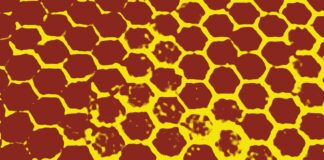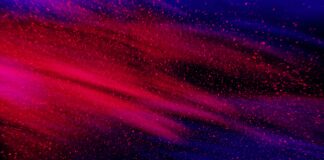Quantum-Enhanced Drug Delivery: Pioneering Innovations in Medicine
In recent years, the convergence of quantum technology and medical science has led to remarkable advancements in various aspects of healthcare. One such innovation that has captured the imagination of researchers and clinicians alike is Quantum-Enhanced Drug Delivery (QEDD). This cutting-edge approach leverages the principles of quantum mechanics to revolutionize the administration of therapeutic agents within the human body, potentially heralding a new era in personalized medicine and targeted treatments.
Traditional drug delivery methods have long been constrained by limitations inherent in the physics of diffusion, circulation, and cellular uptake. While significant progress has been made in optimizing drug formulations and delivery mechanisms, challenges such as off-target effects, suboptimal dosing, and limited penetration into specific tissues or cells persist. Quantum-Enhanced Drug Delivery promises to overcome these barriers by harnessing the unique properties of quantum particles, enabling the manipulation and precision control of drug molecules at a scale previously thought unattainable.
At the heart of Quantum-Enhanced Drug Delivery lies the fundamental concept of quantum coherence – the ability of quantum particles to exist in multiple states simultaneously. This property has been harnessed in various quantum technologies, such as quantum computing and quantum cryptography, to achieve tasks that were once deemed insurmountable. Now, researchers are exploring how quantum coherence can be harnessed to enhance drug delivery methodologies. By utilizing quantum phenomena, scientists are investigating novel ways to optimize drug release kinetics, navigate physiological barriers, and achieve unprecedented levels of specificity in targeting diseased cells.
A key area of exploration within Quantum-Enhanced Drug Delivery revolves around quantum-inspired nanocarriers. These nanocarriers, often composed of biocompatible materials, can encapsulate drug payloads and exploit quantum coherence for precise and controlled drug release. Unlike conventional drug carriers, which rely on passive diffusion or external stimuli for release, quantum-enhanced nanocarriers can exploit quantum tunneling and entanglement effects to fine-tune drug release profiles. This holds immense promise for diseases where temporal and spatial control of drug delivery is paramount, such as certain types of cancer where minimizing damage to healthy tissues is of utmost importance.
Furthermore, Quantum-Enhanced Drug Delivery has the potential to redefine the notion of targeting specificity. Quantum coherence allows for the manipulation of particles in ways that defy classical physics, enabling drug molecules to exhibit behaviors that can be finely tuned. This can lead to the design of drugs that not only have enhanced binding affinity to specific receptors on target cells but can also undergo controlled changes in conformation to optimize interactions. Such advancements could profoundly impact conditions that have thus far proven resistant to conventional therapies, such as neurodegenerative disorders and multi-drug-resistant infections.
The advent of Quantum-Enhanced Drug Delivery has opened up new avenues for crossing biological barriers that have long hindered the effectiveness of therapeutic interventions. The blood-brain barrier, for instance, presents a formidable challenge when attempting to deliver drugs to the brain for the treatment of neurological disorders. Quantum coherence offers the tantalizing prospect of exploiting quantum tunneling phenomena to bypass such barriers, enabling drugs to reach their intended targets with unprecedented precision. This could potentially transform the landscape of neurology, enabling the development of therapies that were previously deemed unfeasible due to the limitations of drug delivery.
Despite the immense promise of Quantum-Enhanced Drug Delivery, several challenges lie ahead. The delicate nature of quantum coherence necessitates a high degree of isolation from the surrounding environment, which can be particularly challenging to achieve within the complex and dynamic milieu of the human body. Moreover, the translation of quantum principles into practical medical applications demands interdisciplinary collaboration between quantum physicists, chemists, biologists, and clinicians. Regulatory frameworks must also evolve to accommodate the unique attributes of quantum-enhanced therapies, ensuring safety, efficacy, and ethical considerations are appropriately addressed.
In conclusion, Quantum-Enhanced Drug Delivery stands as a testament to the remarkable ways in which scientific innovation can transform healthcare. By merging the principles of quantum mechanics with the intricacies of drug delivery, this paradigm-shifting approach holds the potential to reshape the landscape of medical treatments. From quantum-inspired nanocarriers that enable precise drug release to the possibility of overcoming physiological barriers through quantum tunneling, the possibilities are as inspiring as they are groundbreaking. While challenges remain, the pursuit of Quantum-Enhanced Drug Delivery underscores the capacity of human ingenuity to push the boundaries of what is achievable in the realm of medicine. As research progresses and technologies mature, the realization of quantum-enhanced therapies may not be as far-fetched as once imagined, offering a future where precision medicine reaches unprecedented heights.
Precise Drug Release Kinetics:
Quantum-Enhanced Drug Delivery harnesses the principles of quantum coherence to achieve precise and controlled drug release. Unlike traditional drug carriers that rely on passive diffusion or external triggers, quantum-enhanced nanocarriers can exploit quantum tunneling and entanglement effects, enabling fine-tuned drug release profiles. This feature is particularly advantageous for diseases requiring temporal and spatial control of drug delivery, offering potential improvements in therapeutic efficacy while minimizing side effects.
Targeting Specificity Beyond Conventional Limits:
Quantum coherence allows for the manipulation of drug molecules at the quantum level, leading to enhanced targeting specificity. Quantum-enhanced drugs can be designed with superior binding affinity to specific cellular receptors, coupled with the ability to undergo controlled conformational changes for optimized interactions. This capability holds transformative potential for addressing conditions that have resisted traditional therapies, such as complex neurological disorders and drug-resistant infections.
Overcoming Physiological Barriers:
Quantum-Enhanced Drug Delivery has the potential to surmount longstanding challenges associated with drug delivery across physiological barriers. Quantum tunneling phenomena, facilitated by quantum coherence, could enable drugs to bypass formidable barriers like the blood-brain barrier. This breakthrough opens new avenues for treating diseases of the central nervous system and other anatomically secluded regions that were previously difficult to access with therapeutic agents.
Quantum-Enhanced Imaging and Monitoring:
Quantum principles can be extended to enhance imaging and monitoring techniques, providing insights into drug distribution, cellular interactions, and therapeutic responses at unprecedented resolutions. Quantum-enhanced imaging technologies offer the potential to visualize molecular and cellular processes in real-time, enabling clinicians to assess treatment efficacy and adjust therapies in a personalized manner.
Interdisciplinary Collaboration and Innovative Regulations:
The development and translation of Quantum-Enhanced Drug Delivery necessitate interdisciplinary collaboration among quantum physicists, chemists, biologists, medical researchers, and regulatory bodies. Collaborative efforts are crucial for bridging the gap between quantum theory and practical medical applications. Regulatory frameworks must evolve to address the unique attributes of quantum-enhanced therapies, ensuring safety, efficacy, and ethical considerations are adequately addressed in this cutting-edge field.
The convergence of quantum technology and medical science has ignited a new era of exploration, unveiling unprecedented possibilities at the intersection of these seemingly disparate fields. Quantum-Enhanced Drug Delivery (QEDD) emerges as a striking testament to the ingenuity of human endeavor, poised to reshape the landscape of healthcare in ways previously deemed unimaginable. This avant-garde approach marries the principles of quantum mechanics with the exigencies of drug delivery, imbuing therapies with a precision and finesse that was once confined to the realm of science fiction.
Quantum mechanics, a theoretical framework that governs the behavior of matter and energy at the subatomic scale, has long captivated the scientific community with its enigmatic principles. Quantum phenomena such as superposition and entanglement, which defy classical intuitions, have inspired a wave of technological innovations ranging from quantum computing to quantum cryptography. The confluence of quantum principles with medical research has opened a Pandora’s box of opportunities, of which Quantum-Enhanced Drug Delivery stands as a beacon of innovation.
Central to the intrigue of Quantum-Enhanced Drug Delivery is the notion of quantum coherence, a phenomenon that allows quantum particles to exist in multiple states simultaneously. This state of being, though paradoxical within the confines of classical physics, finds its application in diverse quantum technologies. Quantum coherence, in the context of drug delivery, entails the manipulation of drug molecules and their carriers at the quantum scale, enabling an unprecedented level of control and precision in their behavior within biological systems.
In the realm of drug delivery, the challenges have always been multifaceted. Traditional methods often grapple with issues such as nonspecific drug interactions, off-target effects, and inadequate bioavailability. Quantum-Enhanced Drug Delivery, with its promise of fine-tuned molecular interactions, seeks to revolutionize this landscape. By leveraging quantum coherence, researchers strive to design drug molecules that exhibit enhanced binding affinity to specific cellular receptors. Moreover, the ability to manipulate molecular conformations at the quantum level could potentially overcome the obstacles posed by drug resistance, enabling therapies to evade the strategies employed by resilient pathogens.
As researchers delve into the uncharted waters of Quantum-Enhanced Drug Delivery, quantum-inspired nanocarriers emerge as an essential component of this transformative approach. These nanoscale vehicles, constructed from biocompatible materials, serve as ingenious vessels for drug encapsulation and controlled release. Unlike conventional carriers that rely on passive mechanisms for release, quantum-enhanced nanocarriers exploit the marvels of quantum tunneling and entanglement. These phenomena allow for precise control over drug release kinetics, granting clinicians the power to orchestrate therapeutic dosages with remarkable accuracy.
In the quest for effective drug delivery, the conundrum of physiological barriers often looms large. The blood-brain barrier, for instance, poses a formidable challenge when attempting to treat neurological disorders. Quantum coherence bestows Quantum-Enhanced Drug Delivery with a toolset to surmount such hurdles. Quantum tunneling, a phenomenon rooted in the probabilistic nature of quantum particles, offers the tantalizing prospect of drugs bypassing these barriers by traversing energetically unfavorable regions. This paradigm shift in drug transport could unveil a new frontier in the treatment of conditions once considered impervious to pharmaceutical interventions.
Yet, the transition from theoretical promise to tangible medical solutions is fraught with complexities. Quantum coherence, while a powerful ally, is exquisitely sensitive to environmental interactions. Within the intricate milieu of the human body, maintaining quantum coherence demands rigorous isolation from external influences, presenting an intricate challenge. This requirement for environmental isolation necessitates the development of sophisticated technologies that can shield quantum-enhanced drug delivery systems from the tumultuous surroundings they inhabit.
Interdisciplinary collaboration emerges as a cornerstone of the journey towards realizing Quantum-Enhanced Drug Delivery. The marriage of quantum physics with medical science necessitates a harmonious symphony between quantum physicists, chemists, biologists, and clinicians. This fusion of diverse expertise is pivotal for deciphering the intricate language of quantum coherence in the context of biological systems. Furthermore, the regulatory landscape must adapt to accommodate the distinctive attributes of quantum-enhanced therapies, striking a balance between fostering innovation and ensuring patient safety.
The realm of healthcare, perennially driven by the pursuit of improved treatments, finds itself standing at the crossroads of possibility and discovery. Quantum-Enhanced Drug Delivery encapsulates the essence of this juncture, where the marriage of quantum principles and medical ambitions begets a novel chapter in therapeutic interventions. As research forges ahead and technologies mature, the notion of using quantum coherence to enhance drug delivery may transition from the realm of speculation to the realm of reality. The canvas of medicine expands, allowing for brushstrokes of precision and finesse that could redefine the contours of human health. Just as quantum particles dance in multiple states, Quantum-Enhanced Drug Delivery dances on the precipice of what was once thought unattainable, beckoning towards a future where targeted and personalized medicine reigns supreme.














